 |
 ERNIE LE BRUN KATHLEEN CHANTER MURRAY THOMPSON ROSE LE BRUN |
|||
|
Name: Kathleen Chanter
Age: 80 Occupation during 1939: Working in Melbourne as a hairdresser. She talks about her father and motherís close escape in the Rubicon Forest. Age at time of fire: 16 Location of interview: Alexandra "The Herald was always sold in the street and that’s when I saw that fires had been at Rubicon. I knew some of the people that had been burned." My father, Syd Sands, drove the mill engine at Ruoak No.2 mill. My mother, Nellie Sands ran a boarding house there for the workers on the mill. Our family lived in the boarding house but the mill workers didnít live in there, they just took their meals there. Mum worked from morning to night feeding those men. The men would just go off to work and do their hours. My father finished work when the whistle blew. But Mum seemed to be constantly cooking and working, baking her own bread and cooking all these lovely cakes. She ran the boarding house at the mill between 1924 and 1926, and again from1938 to1939. Her workday started at 5am, when she cut lunches for the men going out to work in the bush, before providing breakfast for around 20 men. At 9.30am she took scones and cakes over to the mill for morning tea. This was followed by lunch for the mill crew and afternoon tea at 3pm. Finally, dinner had to be provided for 20 or so hungry men. She also had to order her supplies, including sugar and flour by the sackful, and butter by the box, and she grew all her own vegetables. She kept a cow which had to be milked and hens which had to be fed and have their eggs collected. "My aunty tried to ring on the phone to see if my parents were alright, but the phones were so busy that we just couldn’t get through." All of the cooking was carried out on a wood-fired stove. As well as this she had Dad and us three kids to look after. My brothers and I grew up on the mills. We had quite a good life. We went to school, we entertained ourselves by sliding down the sawdust heaps with a piece of green bark, and we made paper aeroplanes. I remember when Kingsford-Smith went missing, my two brothers and I were at home with a cousin and we made these aeroplanes and went looking for Kingsford-Smith. There were three other families that went to the same school as us. We used to have card nights and the women would be cooking up all these lollies and things, and of course we thought it was great. So they had their social life on the mills, and theyíd walk about three or four miles down to the dances, and play tennis Ė tennis was a big social occasion. I was 16 and working in Melbourne at the time of the fires. I was doing a hairdressing course and I would come home every three weeks or so. Iíd just been home for Christmas at the No.2 mill and Mum and Dad had taken me back to Melbourne and then gone back to the Rubicon. "On Tuesday January 10, 1939, the mill my father worked at burned down and so did my mother’s boarding house." I was going home to catch the train and I was living with an aunty at Cheltenham. In Melbourne the Herald was always sold in the street and thatís when I saw that fires had been at Rubicon. I knew some of the people that had been burned, because they were workers on the mill and had meals at my motherís boarding house. When I got home, my aunty tried to ring on the phone to see if my parents were alright, but the phones were so busy that we just couldnít get through. It was quite a worrying time for us all. On Tuesday January 10, 1939, the mill my father worked at burned down and so did my motherís boarding house. A strong wind had been blowing that morning and the men decided that because it looked dangerous, the women would be taken down to the Tin Hut early in the day on the passenger truck (a single-tramway truck with a flat, planked top). "The fires swept suddenly up the gully, so they had to make a dash down to the dam. That was amazing, because it was quite a long way." The Tin Hut was like a little township at the bottom of the Rubicon ranges, built around the SEC haulage system that took the mill workers and their families up to the mills. There were no roads in those days, just tramways. The mill workers and the women who lived on the mills used to get their supplies from the stores at the Tin Hut. It also had a post office, and many of the mill workers kept their cars there. My father was at the mill when the fires came up the gully. Some other mill workers were with him, probably searching for something in the house or seeing if they could save anything. The fires swept suddenly up the gully, so they had to make a dash down to the dam. That was amazing, because it was quite a long way. They stayed in the dam, and their lives were saved. I believe the water was getting quite hot, so it must have been a terrifying experience for them. But my father never talked much about it at all. I remember the first time I went home after the fires, and how I felt when we got to the Black Spur and it was just desolated. Just blackened, charred trees. Seeing these burned trees, it was unbelievable that the forest had been so lovely just a few weeks before. It was a very emotional thing because all that beautiful forest was just gone, there was nothing there. Iíve never forgotten seeing that. "It was just desolated… all that beautiful forest was just gone, there was nothing there. I’ve never forgotten seeing that." Mum and Dad stayed with Mumís sister in Alexandra until they got a house of their own. They were there for quite a while. My aunty was a dressmaker, a tailor, so Mum used to help Aunty with her sewing. Dad got work at a timber mill in Alexandra. I always felt very sorry for Mum because she had a lovely big block oak chest that theyíd brought from England. It had all her special bits and pieces and wedding presents and things, and they would have all just gone. Read more about the Rubicon tragedy in the Map section |
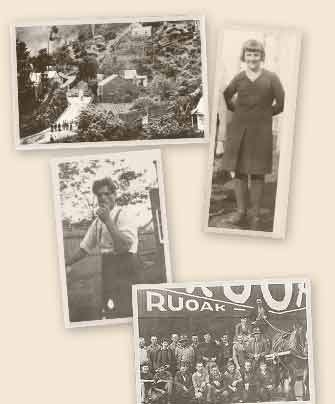 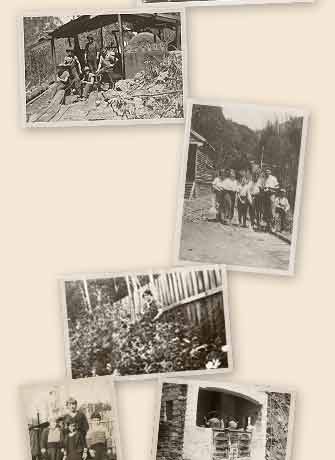 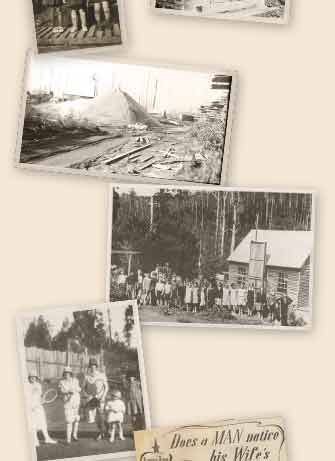 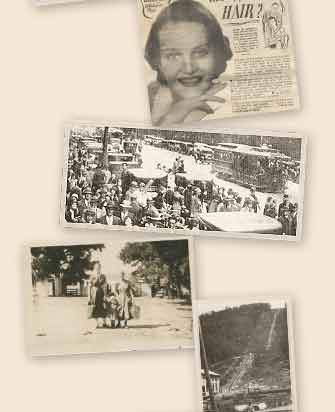 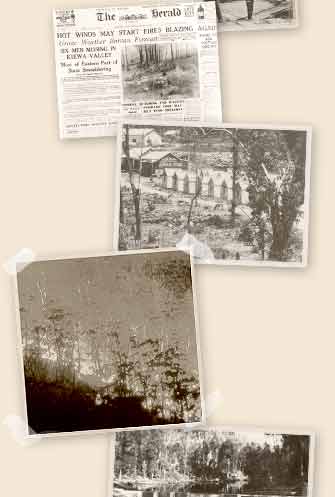 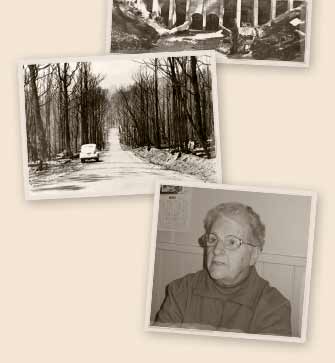
|
||
 |